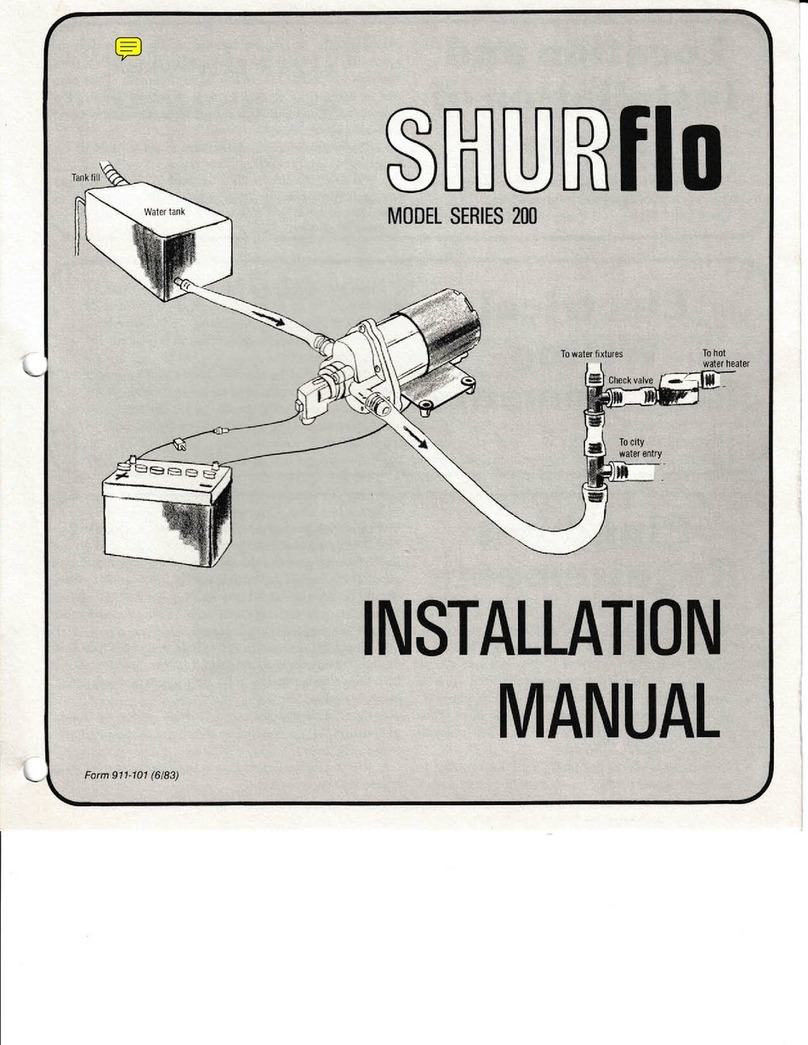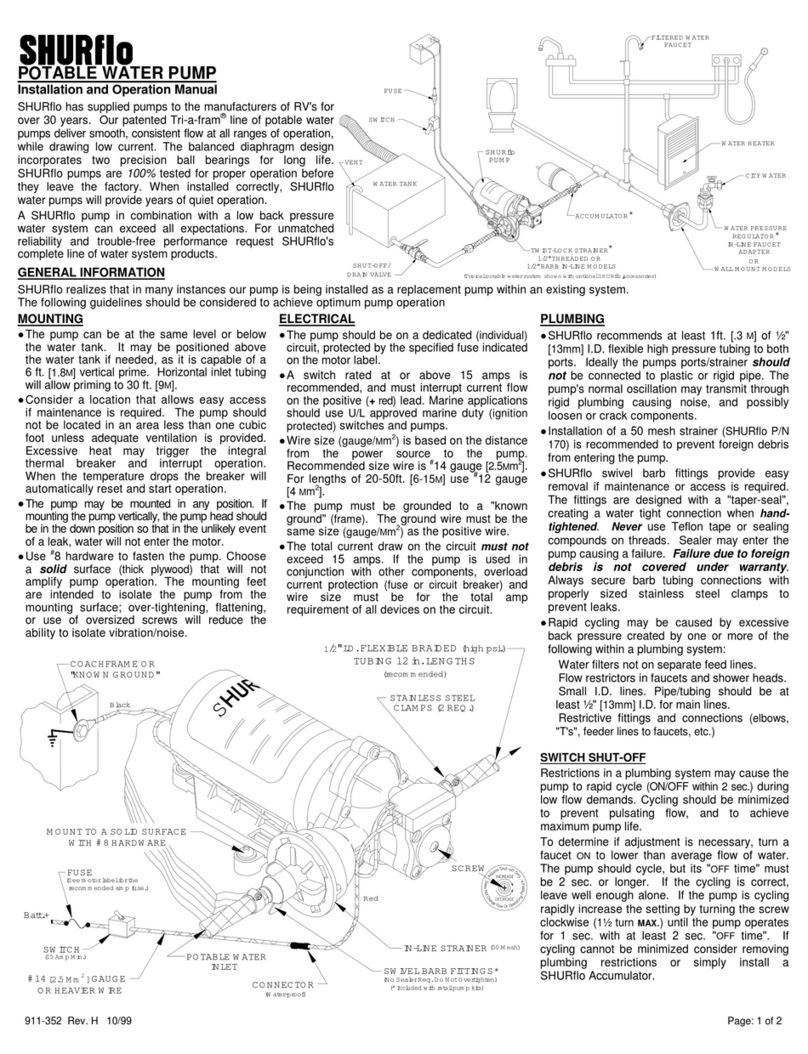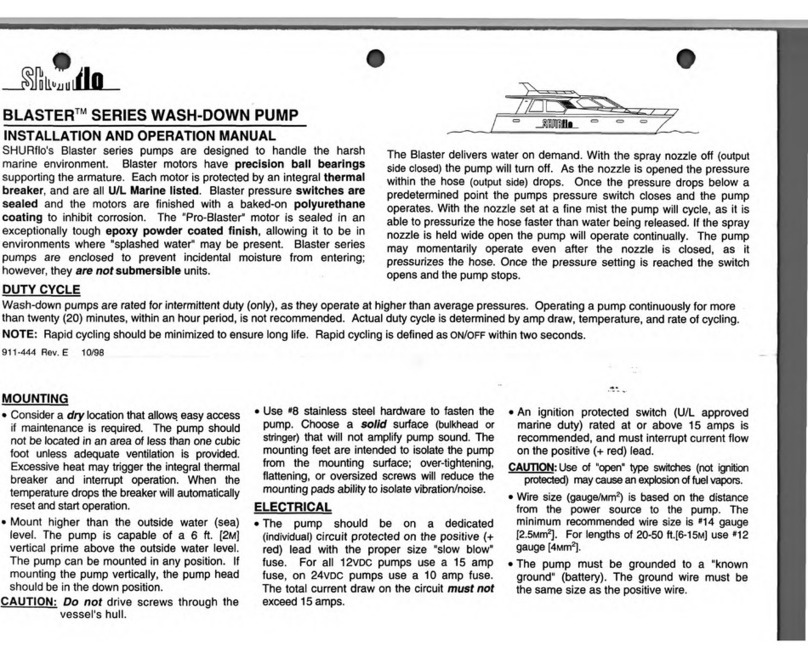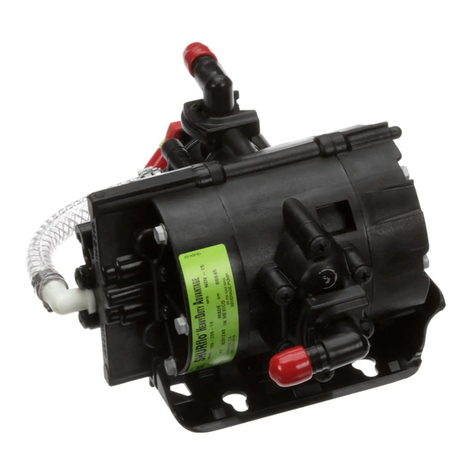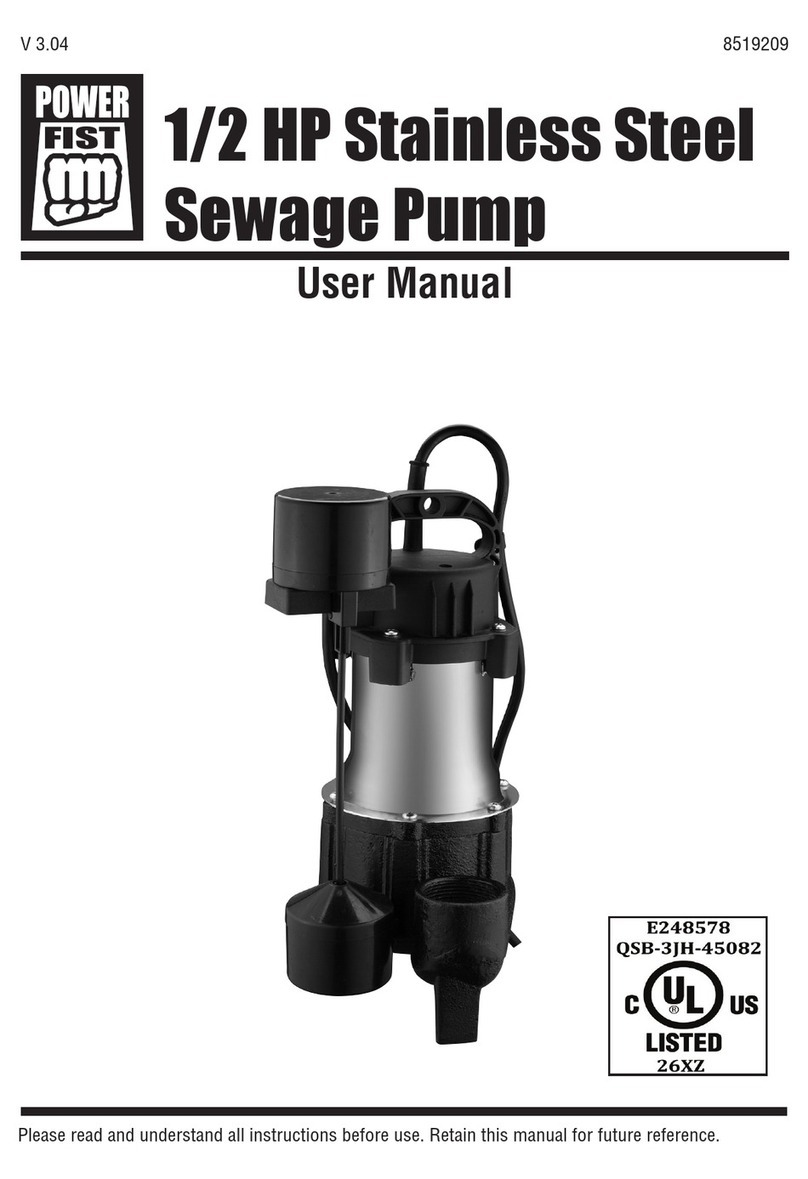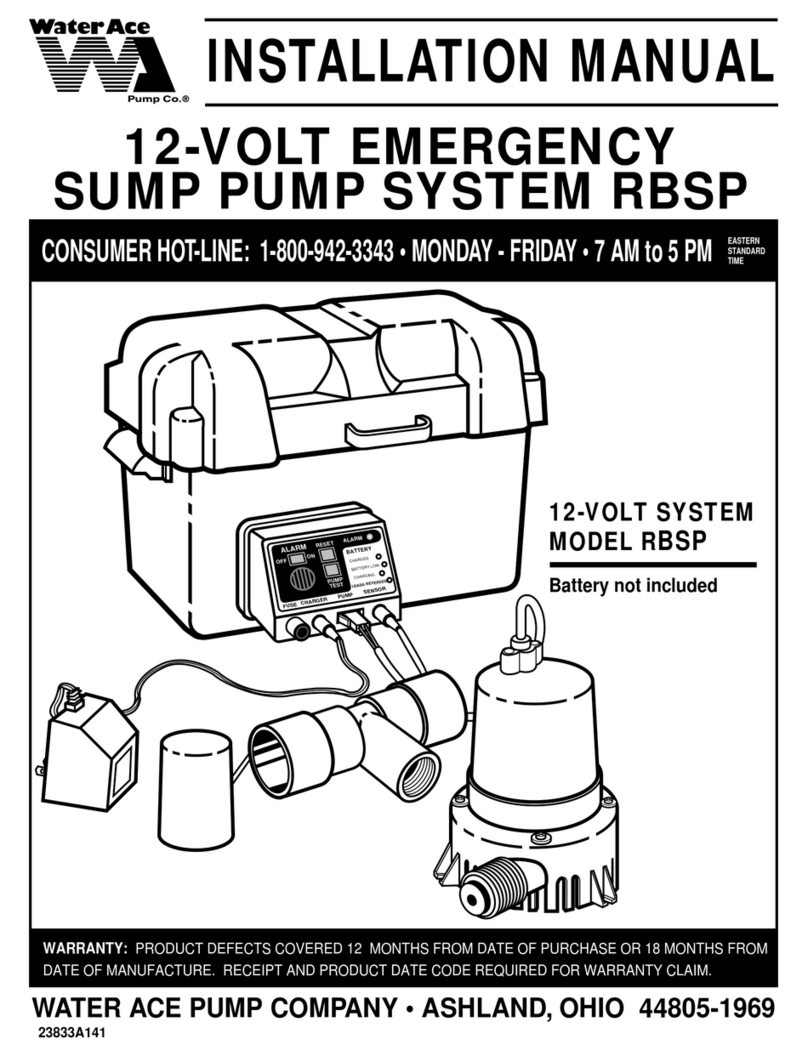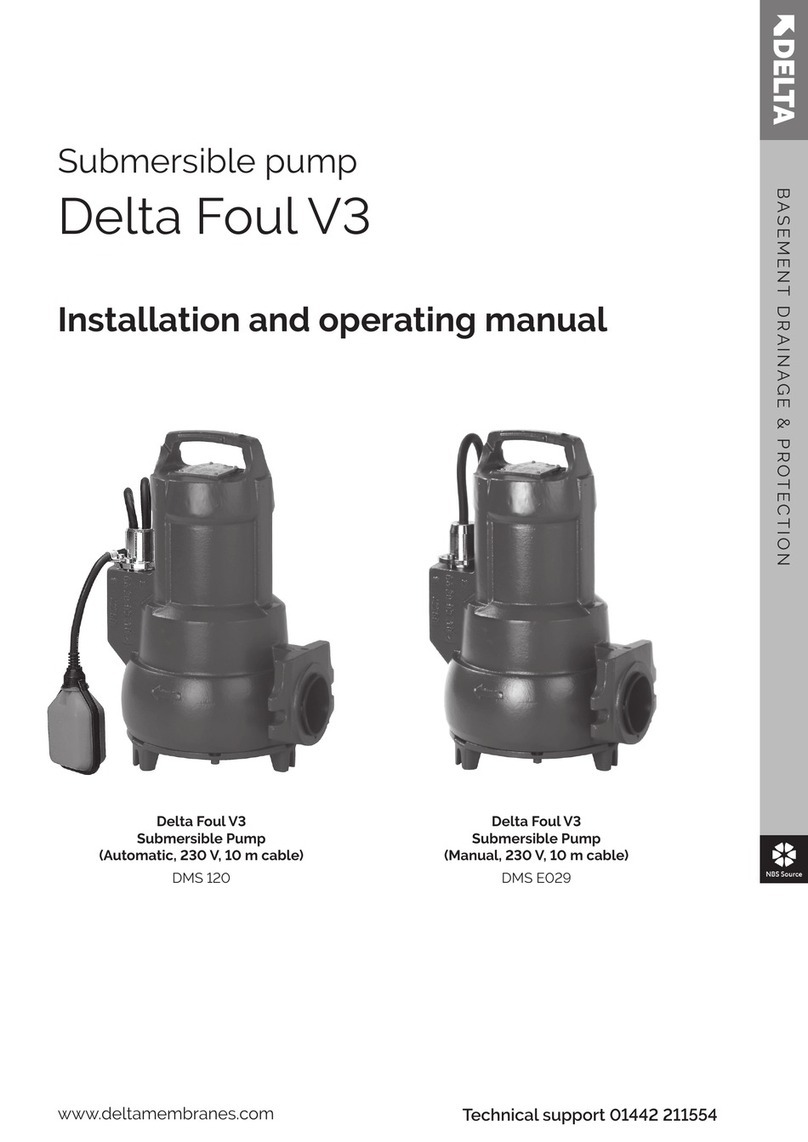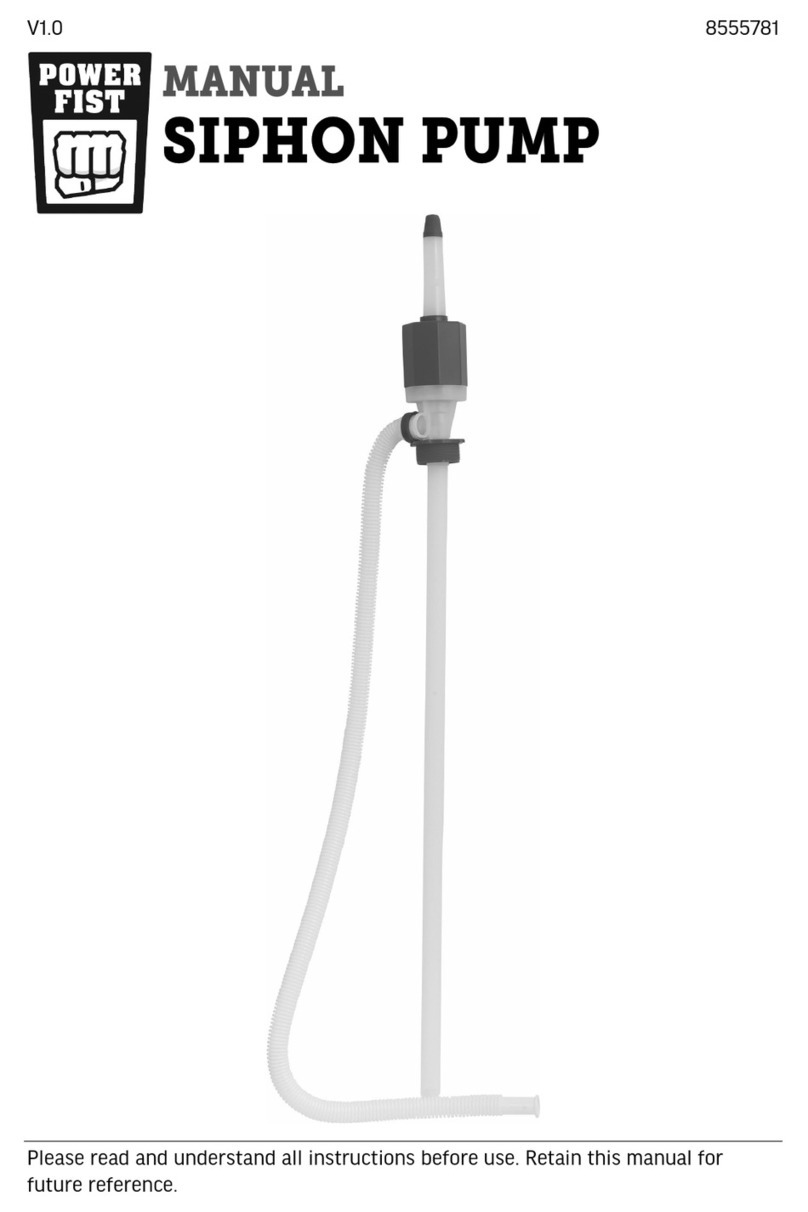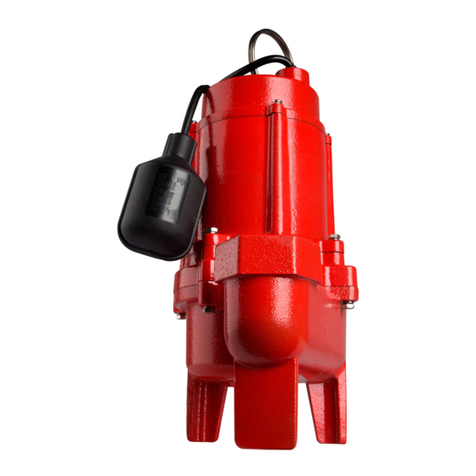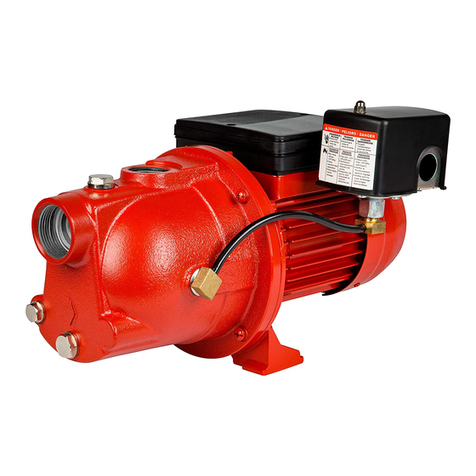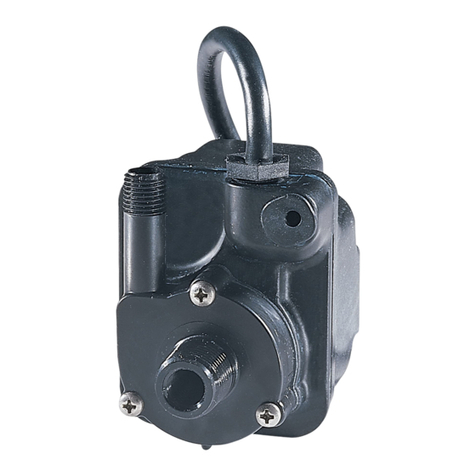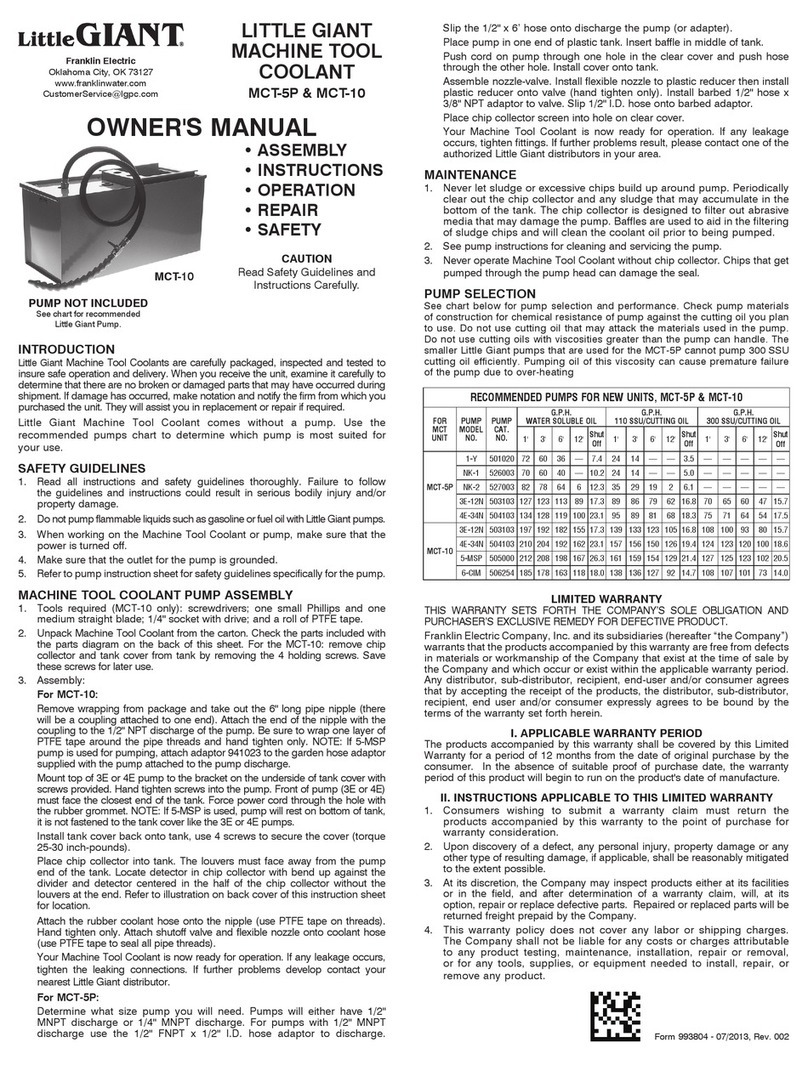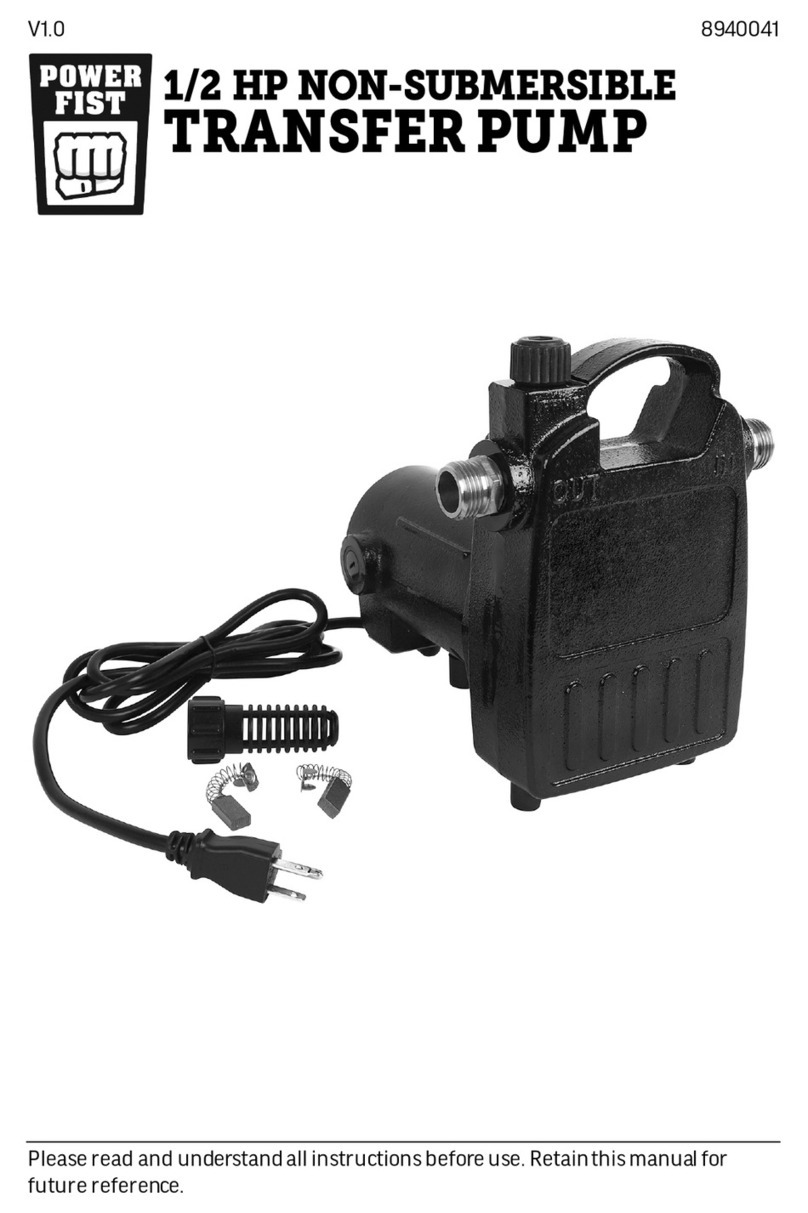
SHURflo Commercial-Duty Filter and Rendering Oil
Rotary Close-Coupled External Gear Pumps
10
Maintenance (Continued)
3. From the drive shaft end of the
gear pump, remove the internal
snap ring (Ref. No. 11) from the
body (Ref. No. 19). The drive
assembly, which consists of the drive
shaft (Ref. No. 5), seal assembly
(Ref. Nos. 7 & 8), seat retainer (Ref.
No. 9), bearing (Ref. No. 10) and
retaining rings (Ref. No. 16 & 23),
can now be removed from the unit
(See Figure 8).
NOTE: The retaining rings (Ref. No. 16
and 23) look alike but are made of
different materials. Make sure you
identify them properly.
The bearing (Ref. No. 10), seat
retainer (Ref. No. 9) and seal (Ref.
No. 7) can also be removed (pushed
or pulled) from the shaft (Ref. No.
5). Also remove the internal o-ring
(Ref. No. 17) from the body (Ref.
No. 19). Disassembly is now
complete.
4. Inspect pump for wear on pump
body, gear, shafts, bushings (bushing
replacement is not recommended),
bearings and cover. If any compo-
nents are worn, consider replacing
the complete pump. Complete pump
heads can be found on Figure 13.
REASSEMBLY
(Refer to Figure 13 for Reference
Numbers and Figures 8 & 9 for detailed
seal and shaft assemblies.)
1. Shaft/Seal Assembly
a.Install inside o-ring (Ref. No. 17)
into body (Ref. No. 19). Lubricate
with light oil.
b. There are two possible types of
seals. One style, the seal is one
piece while the other style has a
seal boot, spring and spring
retainer (See Figure 9). Refer to
assembling components on drive
shaft (See Figure 8). When
installing the seal on the shaft,
wet with water and be cautious
when sliding it into position.
NOTE: If drive shaft has scratches
or rough spots where seal will be
positioned, replace shaft. Prior to
sliding the seal in place, remove any
rough spots on shaft near key retainer
ring slots.
The spring retaining washer and
spring are behind the seal with the
carbon facing towards the splined
end of drive shaft.
c. The seal seats can also be of two
styles; one has a rubber boot and
the other has an o-ring. Identify
which type you have (See Figure
9). Press seal seat into the seal
retainer (See Figures 8 & 9) using
water as a lubricant. The white
shiny Type 1 Ni-Resist face should
be visible after pressing the seal
to the seal retainer. It is recom-
mended to use a cardboard wash-
er or wood dowel when pushing
the seal seat into the seal seat
retainer. Any scratches, dirt, or
fingerprints on the carbon or
Type 1 Ni-Resist faces will cause
the seal to leak. The seal seat is
stationary in the pump, while the
seal on the shaft rotates. The car-
bon face spinning against the
Type 1 Ni-Resist face provides for
the sealing surface.
d. Slide the seal retainer onto
the drive shaft holding seal
onto the shaft.
e. Slide the drive shaft assembly
(Ref. Nos. 7,8,9,10,16 & 23) into
the gear pump and secure with
the internal retaining ring (Ref.
No. 11). (Also see Figure 8.)
2. Gear and Shaft Installation
a. Replace the woodruff key (Ref.
No. 25) into the drive shaft (Ref.
No. 5) using soft jaw pliers, or
protect the shaft with rubber
while pressing the key in place. Be
sure that the key is level and that
the key and shaft are free of burrs
and scratches.
b. The drive gear (Ref. No. 3) can
be dropped in place and must be
free to float on the shaft. Do not
force the drive gear onto the
shaft. For standard clockwise
rotation, the drive gear should be
the right-hand twist helical gear
(See Figure 7).
c. The idler gear (Ref. No. 4) is
placed on the idler shaft (Ref. No.
24) over the woodruff key and
secured by the two external
retaining rings (Ref. No. 15).
d. Slide idler gear and shaft assembly
into pump body (Ref. No. 19),
rotating gear to get gears to
mesh.
e. Ensure that the pump body (Ref.
No. 19) and cover (Ref. No. 34)
mating surfaces are clear of debris
and are dry.
Place new, clean and dry o-ring
gasket into the groove on the
pump body.
Any foreign or liquid
material on the gasket
or the gasket surfaces will increase the space
between the gears and the cover, and sub-
stantially reduce pump performance.
f. Slide cover over dowel pins (Ref.
No. 21).
NOTE: Position cover (Ref. No. 1) with
pressure relief valve on the discharge
side of the pump—for clockwise rota-
tion, this is the right side of the pump
(See Figure 1). If the pump is to be run
in reverse direction, rotate cover (Ref.
No. 1) 180° so that the relief valve is on
the discharge side. Ensure that the
gears are installed for proper direction
as well (See Figure 7).
The drive shaft assembly will
require slight compression as
cover is tightened. Replace and
tighten cover screws. Alternate
from top to bottom and side to
side while tightening screws.
Torque cover screws to 50 in.-lbs.
g. Reinstall pump to motor, see
“Reassembly” section on this page.
Models NG7V, NG11V, NG7V-PH and NG11V-PH
SHURflo Operating Instructions, Performance,
Specifications and Parts Manual
Form L-4092 (3/10)

















